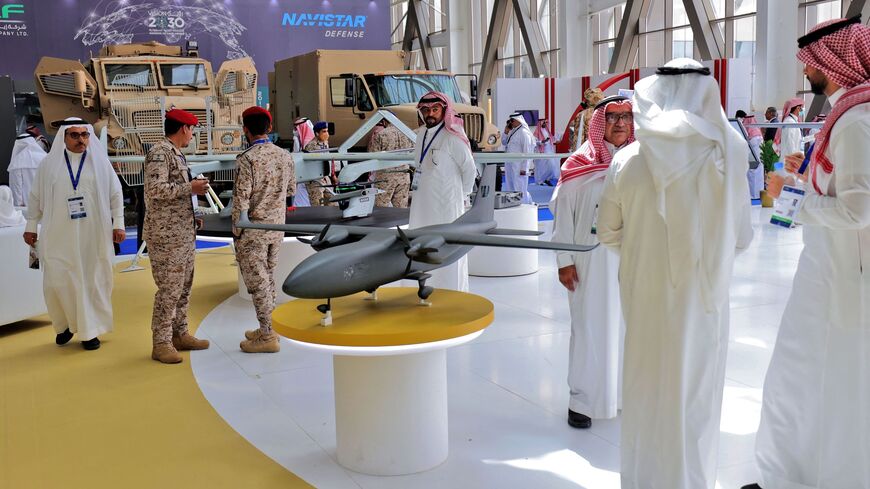Military drones give underdogs the edge in wars against richer opponents
Wed 10:15 pm +01:00, 16 Mar 2022
On March 11, the Pakistani Air Force confirmed that it has acquired two different types of Turkish drones, the TB2 and Akinci. Pakistan is the latest of 10 countries operating TB2s — an unmanned aircraft which has recently captured the world’s attention in the Ukraine war, successfully striking Russian ground targets. While this Turkish weapon has rallied Ukrainians and enraged Russia, its achievements may incite more states to procure them.
The expanding commercial market of unmanned aerial vehicles (UAVs) has also amplified the danger of weaponized strikes. Violent non-state actors have demonstrated that less sophisticated drone systems can be turned into deadly weapons. As their range and accuracy have increased, armed forces have raced to equip themselves with counter-unmanned aircraft systems (C-UAS). However, after almost half a decade, Middle Eastern states are still struggling to overcome the drone threat.
Since July 2018, when the Houthis launched an attack on the Abu Dhabi International Airport, there have reportedly been over 100 drone attacks against commercial airports and military facilities in the Middle East and North Africa region. These strikes are increasingly carried out by militant groups, targeting critical infrastructure, and powered by widely available, cheaper technology.
The threat falls under two broad categories. Fixed-wing military drones tend to be larger and more advanced platforms. Known operators are Iran and its allied groups, including Hamas, the Houthis, and Hezbollah. Additionally, some of these organizations have also set up their own drone production, supported by Iranian know-how.
The Sammad, a large Houthi-operated drone, can be armed with a large warhead and has an estimated range of 1,500 kilometers, enabling Houthi forces to strike targets outside of Yemen. In 2019, Ansar Allah hit two major oil facilities in Saudi Arabia from 500 miles away, damaging central installations responsible for the majority of the country’s crude oil output. These attacks represented their most accurate strike to date and highlighted both a vulnerability in Riyadh’s counter-drone capabilities, and the difficulty of controlling one’s own airspace.
In the second category, commercially available drones can be modified to act as suicide aircraft or to drop projectiles over shorter ranges. These include Chinese-manufactured quadcopters, like the X-8 and the DJI Phantom, which were heavily used by the Islamic State (IS) in Syria and Iraq initially for propaganda and reconnaissance purposes. But gradually, IS forces weaponized them and attacked ground targets. The Houthis have also mastered these drones, which they locally manufacture in Yemen with Iran’s assistance.
Non-state actors’ drones have demonstrated increasing precision and reach, and they carry out more complex missions targeting critical infrastructure.
The speed of drone evolution has meant that C-UAS technology must keep up with or exceed it. However, regional governments have been scrambling to assemble a response, and questions are being asked as to how countries with some of the world’s largest defense spending have repeatedly fallen victim to drone attacks.
Middle Eastern states have used a combination of defenses built against large, fixed-wing UAVs and against smaller drones. Saudi Arabia has relied heavily on American-made equipment, including the Patriot missile and THAAD systems (the latter will now be domestically produced) to thwart Houthi ballistic missile and drone attacks, as well as using F-15 fighters armed with AMRAAM air-to-air missiles. However, critics have called the Patriot “irrelevant” as it has a poor track record of accuracy and was not designed for low-altitude drones (i.e. ones used in the Aramco attack).
Similarly, the UAE has looked to foreign partners to increase its defensive capabilities, specifically the US and Israel, while also seeking to develop domestic solutions. The Emirates’ defense systems include the South Korean made M-Sam for medium-range interception, US-built PAC-3 Patriot missiles and THAADs for the long-range, and a combination of Russian-produced Pantsir gun and missile platforms and the Swiss-made Skyguard radar for shorter-range engagements. But even so, the country (much like its larger neighbor) was still victim of a lethal drone attack in January 2022 on fuel-carrying tankers.
Among the better equipped in the region, Israel has also opted to further diversify its interception capabilities. Arguably its most important air defense system is the Iron Dome, which is effective against both large and small drones complemented by F-16 and F-35 fighter jets as well as helicopters to fire air-to-air missiles.
Conventional air defense systems are generally tailored to larger aircraft. Small drones camouflage easier and go undetected by traditional radar coverage. However, even when anti-aircraft systems are successful against small UAVs, they are an expensive solution contrasted to the very low cost of the intruding drone. For the moment, no technology is able to detect and trace all different drones under all conditions.
Drones are in the Middle East to stay. As they become more widespread and cheaper, they represent not only a menace to conflict areas, but also to structures far from theaters of war.



